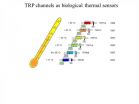(Press-News.org) Scientists at the University of Liverpool have shown that the most complete giant sauropod dinosaur, Dreadnoughtus, discovered by palaeontologists in South America in 2014, was not as large as previously thought.
Found in Patagonia, the huge fossil had almost all of the major bones intact, allowing scientists to confidently estimate its overall size - measuring in at 26 metres long.
Preserved in rock, it is thought that the animal was close to maturity but not fully grown when it died, and may have grown to be even larger. The long-necked, plant-eating dinosaur was the biggest to ever walk the earth.
To estimate the mass of Dreadnoughtus scientists originally used a scaling equation that predicts body mass based on the size of thigh and arm bones. This method produced a range of estimates with the average being a colossal 60 tonnes.
Scientists at the University of Liverpool, in collaboration with researchers from Liverpool John Moores University, the University of Manchester, and Imperial College, re-evaluated this estimate after it became clear that other sauropod dinosaurs, only marginally smaller than the giant, weighed considerably less than 60 tonnes.
The team used a three-dimensional skeletal modelling technique to examine body mass more directly. This method involves mathematically reconstructing a 'skin' volume around bones of Dreadnoughtus on a computer and then expanding that skin outline to account for muscle, fat and other tissues.
The size of expanded skin outline is based on similar data from living animals. By exploring a range of expansions the team could more accurately predict how heavy Dreadnoughtus could realistically have been.
The team found that the mass of the Dreadnoughtus was more likely to be between 30 and 40 tonnes, considerably less than originally thought.
Dr Karl Bates, from the University's Institute of Ageing and Chronic Disease, explains: "Estimating the body mass of an extinct animal from approximately 77 million years ago of this size from only its fossilised bones is extremely challenging and relies on the availability of certain data from living animals and modelling techniques.
"The original method used to calculate the mass of the animal is a common one and has been used successfully on many specimens. The highest estimates produced for this particular giant, however, didn't quite match up.
"Using digital modelling and a dataset that took in species, alive and dead, we were able to see that the creature couldn't be as large as originally estimated."
"Our analysis suggests that only the lower estimates produced by previous methods are plausible. Estimates of 60 tonnes and above do not fit with our current understanding of the mass characteristics of living land animals."
It is unclear how accurate previous predictions on the scale of these creatures have been, but future studies of living animals and developments in modelling techniques could help build a more fulsome picture of the size and lifestyles of the dinosaurs.
The research is published in the Royal Society journal Biology Letters.
INFORMATION:
Having a hierarchical social structure with just a few well-connected leaders enables pigeon flocks to navigate more accurately on the wing, new research shows.
Hierarchical organisation also enables flocks to cope better with navigation errors made by individual birds.
Researchers from Oxford University and the Zoological Society of London created 'virtual flocks' of homing pigeons to test how different social networks affect the navigation performance of these groups. The team's simulations looked at everything from no networks (all connections between individuals ...
A single dose of the bivalent human papillomavirus (HPV) vaccine (Cervarix®, GlaxoSmithKline group of companies) may offer a similar level of protection against HPV-16/18 infections, which cause about 70% of cervical cancers, as the current two- and three-dose schedules, according to new research combining data from two large phase 3 trials published in The Lancet Oncology.
"Our findings question the number of HPV vaccine doses truly needed to protect the majority of women against cervical cancer, and suggest that a one-dose schedule should be further evaluated. ...
NEW YORK, June 9 -- The World Health Organization released its 2015 updated essential medicines list and for the first time included the progesterone contraceptive vaginal ring (CVR), a contraceptive safe and effective for lactating women in the postpartum period.
The progesterone CVR, developed by the Population Council, is an intravaginal ring that provides women who breastfeed at least four times a day with a contraceptive option as early as four weeks after giving birth. It can be used for up to a year for improved birth spacing.
'More than 220 million women in ...
UC Davis researchers have identified the molecular interactions that allow capsaicin to activate the body's primary receptor for sensing heat and pain, paving the way for the design of more selective and effective drugs to relieve pain. Their study appeared online June 8 in the journal Nature Chemical Biology.
Capsaicin is the ingredient that makes chili peppers spicy and hot. The same pathway in the body that responds to spicy food is also activated after injury or when the immune system mounts an inflammatory response to bacteria, viruses, or in the case of autoimmune ...
Our sun is a volatile star: explosions of light, energy and solar materials regularly dot its surface. Sometimes an eruption is so large it hurls magnetized material into space, sending out clouds that can pass by Earth's own magnetic fields, where the interactions can affect electronics on satellites, GPS communications or even utility grids on the ground.
The clouds can be large or small. They can be relatively slow or as fast as 3,000 miles per second, but only one component has a strong effect on how much a CME will arrange the magnetic fields in near-Earth space. ...
Researchers at the University of Pennsylvania have found a three to five percent reduction in the probability of criminal recidivism among a sample of juveniles arrested for felony drug offenses, some of whom were processed as adults due to their age at the time of their arrests.
In a study published in the Journal of Research in Crime and Delinquency, Charles Loeffler, an assistant professor of criminology in the School of Arts & Sciences and Ben Grunwald, a doctoral candidate in the criminology department, analyzed the effect of processing juveniles as adults using ...
For engine designers in the digital age, time is money. And that time is measured in computer cycles.
Researchers at the U.S. Department of Energy's Argonne National Laboratory are partnering with Convergent Science, Inc. (CSI), to speed up a key piece of modeling and simulation software to ensure those cycles are used as effectively as possible, reducing product development time and resulting in better engines and savings for consumers. The scale of the speed gains were recently demonstrated when researchers ran the largest engine simulation to date on more than 4,000 ...
Irvine, Calif., June 9 -- Brain inflammation caused by chronic nerve pain alters activity in regions that regulate mood and motivation, suggesting for the first time that a direct biophysical link exists between long-term pain and the depression, anxiety and substance abuse seen in more than half of these patients, UC Irvine and UCLA researchers report.
This breakthrough finding also points to new approaches for treating chronic pain, which is second only to bipolar disorder among illness-related causes of suicide. About a quarter of Americans suffer from chronic pain, ...
MAYWOOD, Ill. -- Brain lesions in children can be especially challenging to diagnose, according to a report in the journal Frontiers in Neurology by a multidisciplinary team of Loyola University Medical Center physicians.
Lesions include tumors, abnormal blood vessel formations and abscesses and inflammation due to infections.
In the pediatric population, such lesions 'can have a large variety of underlying etiologies (causes), which can be challenging to differentiate on neuroimaging,' lead author Marisa McGinley, M.D., and colleagues report.
The Loyola physicians ...
Promotion of handwashing with soap and weekly nail clipping are both successful strategies to decrease intestinal parasite re-infection rates in school aged Ethiopian children, according to a study published by Mahmud Abdulkader Mahmud and colleagues from Mekelle University, Ethiopia, in this week's PLOS Medicine.
The researchers reached these conclusions by conducting a cluster randomized controlled trial in which 367 parasite-negative school-aged children in Northern Ethiopia were randomly assigned to either the handwashing intervention, the nail clipping intervention, ...


